#murgantia histrionica
Text
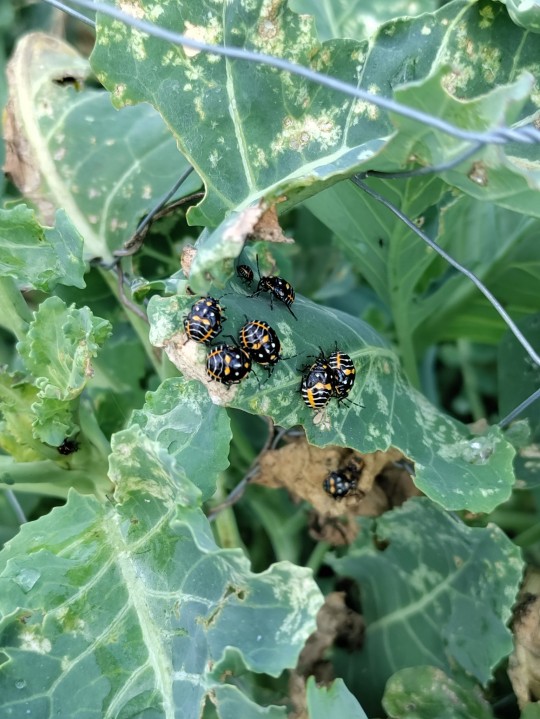
Harlequin bug nymphs! probably bad for the garden but they sure are neat lookin
5 notes
·
View notes
Text

7/30/22
1 note
·
View note
Text

harlequin bug, murgantia histrionica
photo credit
11 notes
·
View notes
Text
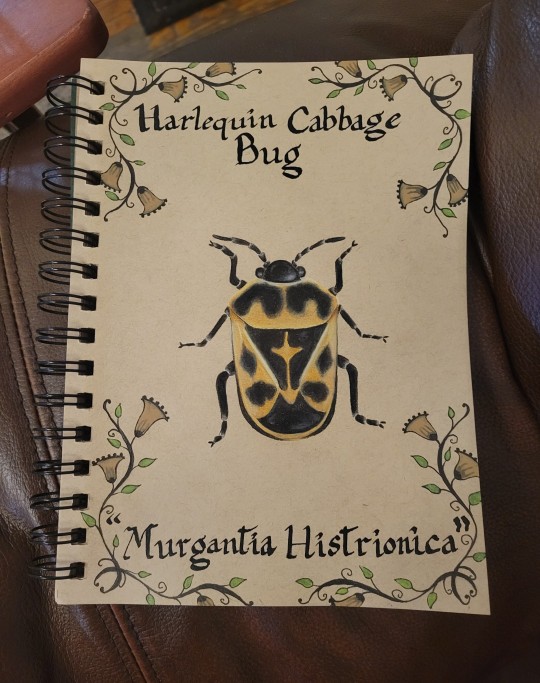
Harlequin Cabbage Bug (Murgantia histrionica)
Mr. Cabbage himself is colored pencil, and the calligraphy surrounding him is black India ink
1 note
·
View note
Text

Harlequin Bug (Murgantia histrionica) by judygva on iNaturalist
0 notes
Text
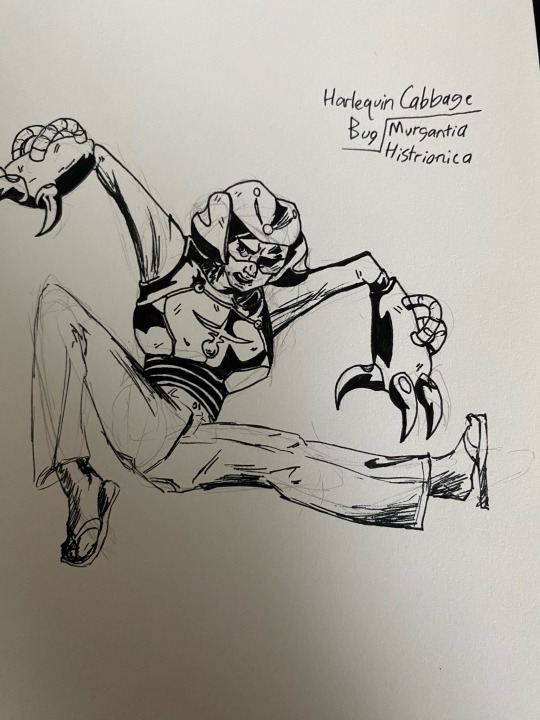
And we are now caught up!
Insect: Harlequin Cabbage Bug (Murgantia Histrionica)
About: teenage vigilante, her brother is an inventor but they don’t have a huge budget so she only has half her super suit currently. She has the ability to absorb energy from others, and the suit amplifies this ability, allowing her to sap strength and raw super powered energy from villains temporarily, often making weaker villains loose the will to fight. She stores the energy in her gauntlets, which helps keep the suit powered up. She is mute and communicates through ASL.
0 notes
Photo

The Harlequin Cabbage Bug (Murgantia histrionica) is not a big you want anywhere near your vegetable garden. #insectsoftexas #backyardnature (at Dallas, Texas) https://www.instagram.com/p/CkefWIyvste/?igshid=NGJjMDIxMWI=
0 notes
Text
Harlequin bug pinbox

The literal "sucking-to-death" of the host plant results in wilting, browning, and eventual death. The harlequin bug feeds on its host plant by sucking the plant's juices. In the absence of these favorite hosts, tomato, potato, eggplant, okra, bean, asparagus, beet, weeds, fruit trees and field crops may be eaten. Plants commonly attacked by the harlequin bug include such crucifers as horseradish, cabbage, cauliflower, collards, mustard, Brussels sprouts, turnip, kohlrabi and radish. Photograph by James Castner, University of Florida. Adult harlequin bug, Murgantia histrionica (Hahn). At rest, the front pair of wings overlap and the insect's back appears to be marked with a distinct X.įigure 4. Photograph by James Castner, University of Florida.Īdults: The adults are gaudy red-and-black-spotted stink bugs about 9.5 mm long, with flat, shield-shaped bodies. Nymph of the harlequin bug, Murgantia histrionica (Hahn). The abdomen coloration progresses similarly to that of the thorax, getting showier with each progressive molt.įigure 3. The thorax ranges from pale orange in first instars to a final pattern of scarlet, white, yellow and black in the fifth or sixth instars. Antennae of first instars are colorless and darken to black with each progressive molt. The head coloration of the nymphs ranges from pale orange (in first instar), darker (in second to fourth) to black (in fifth instar). Nymphs: There are five or six nymphal instars that feed and grow for four to nine weeks before they are capable of mating. Photograph by Lyle Buss, University of Florida. Eggs and nymphs of the harlequin bug, Murgantia histrionica (Hahn). Photograph by James Castner, University of Florida.įigure 2. Eggs of the harlequin bug, Murgantia histrionica (Hahn). The eggs hatch in four to 29 days, the time varying with the temperature.įigure 1. Each egg is marked by two broad black hoops and a black spot. Approximately 12 eggs are laid together in one batch, usually on the underside of the leaves of the host plant. Harlequin bugs pass the winter as adults (commonly referred to as stink bugs) and true hibernation is doubtful.Įggs: Eggs of the harlequin bug resemble tiny white kegs standing on end in a double row ( Figure 1). The life cycle consists of three stages: egg, nymph and adult. It first spread over the southern United States from Mexico shortly after the Civil War.Ī generation of the harlequin bug requires 50 to 80 days. This insect is rarely found north of Colorado and Pennsylvania. The harlequin bug is a southern insect ranging from the Atlantic to the Pacific coasts. The harlequin bug injures the host plants by sucking the sap of the plants, causing the plants to wilt, brown and die. This pest has the ability to destroy the entire crop where it is not controlled. The harlequin bug is an important insect pest of cabbage and related crops in the southern half of the United States. Scientific name: Murgantia histrionica (Hahn) (Insecta: Hemiptera: Pentatomidae) Introduction - Distribution - Life Cycle and Description - Hosts - Damage - Management - Selected References Introduction (Back to Top)

0 notes
Photo

Harlequin Bug (Murgantia histrionica)
April 24, 2021
Southeastern Pennsylvania
106 notes
·
View notes
Photo
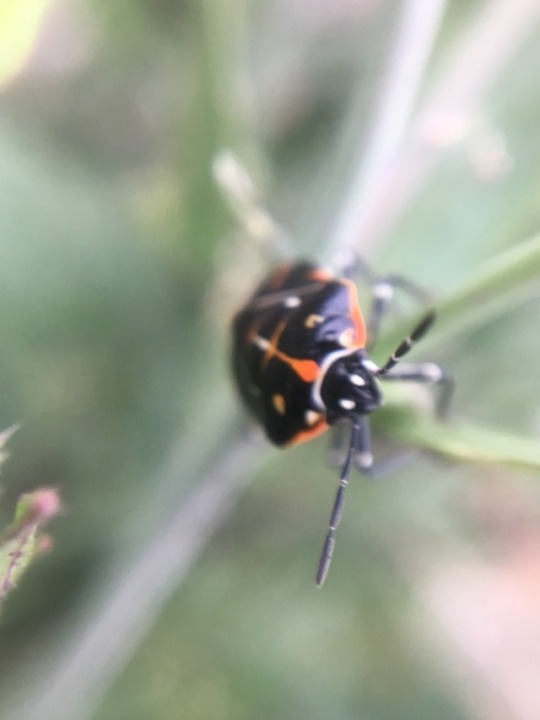
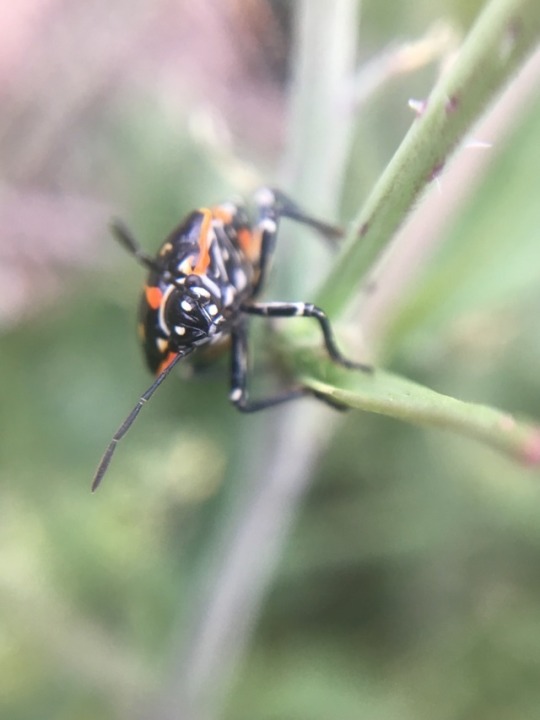
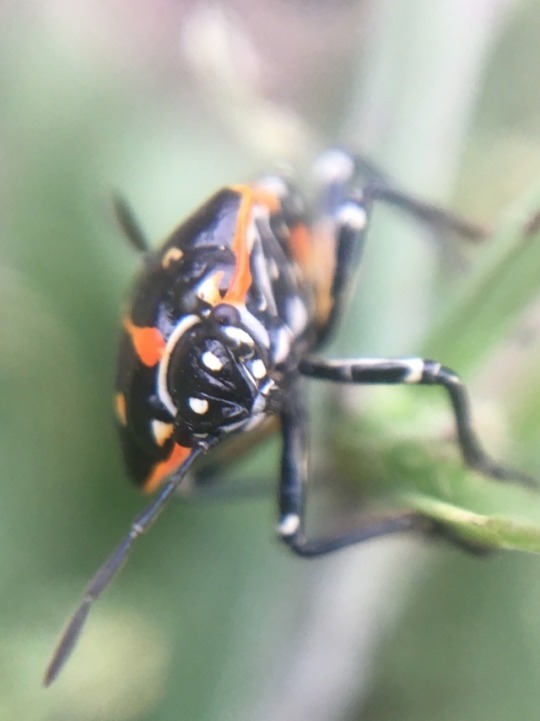
8 notes
·
View notes
Video
Balancing act by Jon Nichols
Via Flickr:
Harlequin cabbage bug has made it to the top
2 notes
·
View notes
Photo
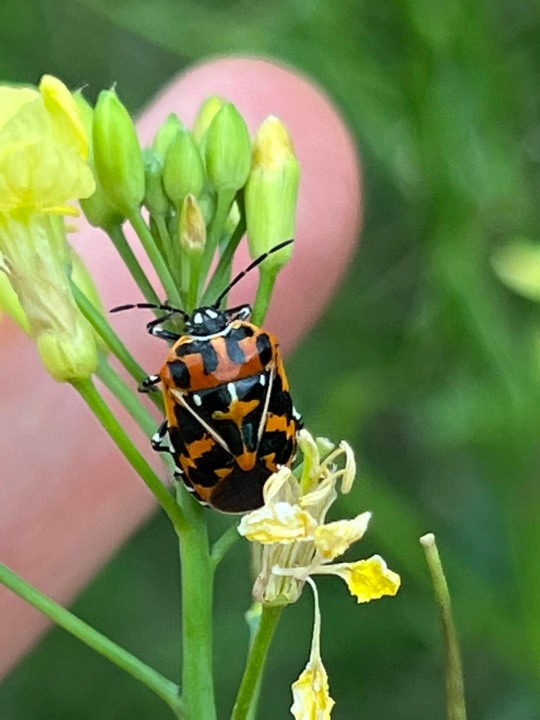
A Harlequin bug, Murgantia histrionica, feeding on wild “Bastard Cabbage” next to White Oak Bayou in Houston, TX, USA
photograph by Paxon Kale CC
10 notes
·
View notes
Photo
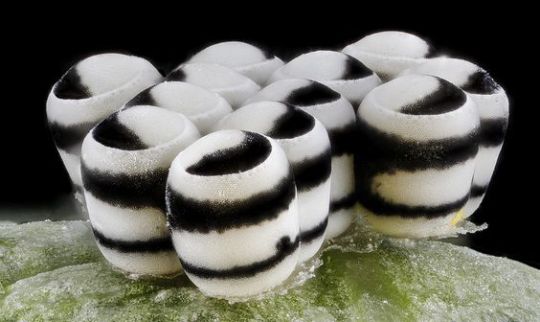
Murgantia histrionica (harlequin bug) eggs
[Sam Droege / flickr]
33 notes
·
View notes
Photo
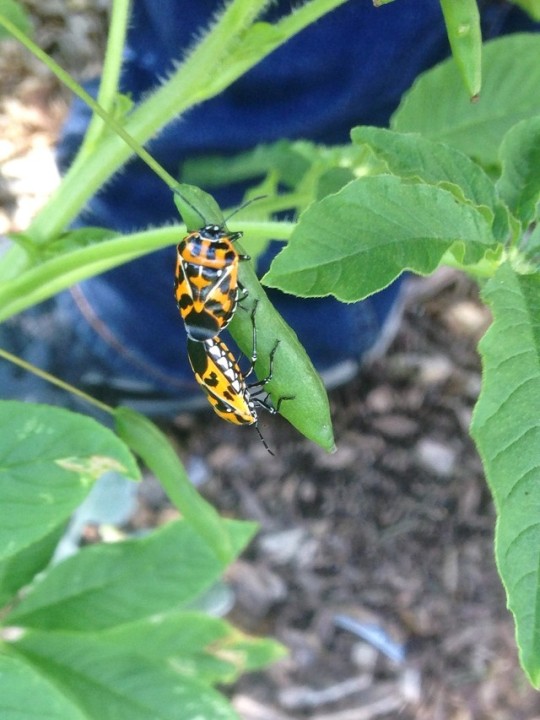
Harlequin bug (Murgantia histrionica), Newark DE, August 2018.
This species is sometimes referred to as the calico bug for its orange and black coloration, making it a pretty addition to any entomologist’s collection (like myself!). For many gardeners, however, its presence sparks concern, as its piercing-sucking mouthparts can drain the juices from plant tissues and cause wilting and early rot. Cabbage plants often turn brown following harlequin bug attack and appear as though the plant had been burnt, hence the bug’s other moniker: fire bug.
A common pest of gardens in the southern US, the harlequin bug was first detected in Texas in the 19th century. As a feeder of native mustard plants (family Brassicaceae, which includes cabbage, kale, and cauliflower, among others), it spread northward from central america through the expanse of agricultural crops and is now encountered as far north as southern Canada.
Multiple generations, depending on the growing season. A single generation may take up to two months.
28 notes
·
View notes
Photo

The Talisman of Mirage
“Legendary Magical Artifacts,” found in “Equestrian Cultures and Comradery” Celestia previously had this artifact before giving it to the school. (on of 6 legendary artifacts)
I just got to say... Love the Changeling lore.
Hay look Mirage shares her name with 482 different changeling OCs. (Like its one of the 3 go to changeling names, along with Carapace, and cocoon. I see them being used by fans frequently.) I personally try to avoid overly common names, going as far as to research the scientific names for some classes of bugs or their specialized anatomy to come up with new names. (I list them below)
Some changeling names I’ve used:
Silk, Noctuidae, Hymenoptera, Acidic Stream, Needle, Ellipse, Threads, Waver, Helix, Fibonacci, Shelly, Chorion, Pareronia, Murgantia, Chorion, Pareronia, Histrionica, Rumicis, Acronicta, Genera.
Most of these are character’s within Silk’s hive and you can send the asks too.

PS: Tuffles is worst changeling.
10 notes
·
View notes
Photo
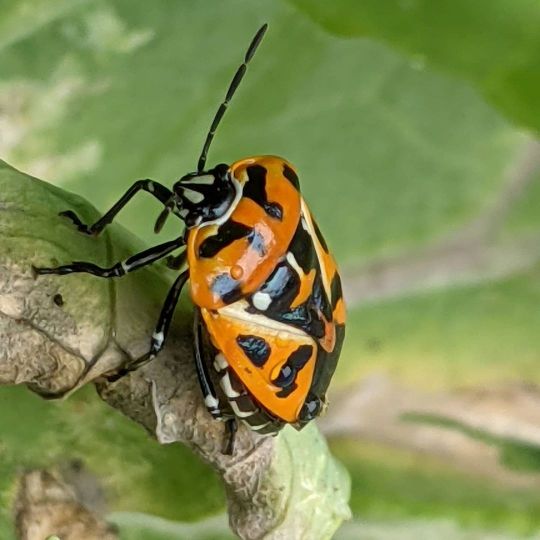
The harlequin cabbage bug (Murgantia histrionica), also known as calico bug, fire bug or harlequin bug, is a black stinkbug of the family Pentatomidae, brilliantly marked with red, orange, yellow and white markings. It is a major pest of cabbage and related crops in the Brassicaceae, as well as the ornamental flower cleome throughout tropical and North America, especially the warmer parts of the United States. (at Arlington, Virginia) https://www.instagram.com/p/CTic1k4szQjH41royans11ysA-STD8GuwFE9PA0/?utm_medium=tumblr
0 notes
